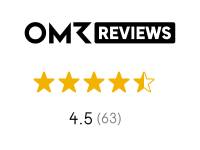Projekte sind schwierig zu strukturieren? Glücklicherweise ist das mit smenso nicht der Fall. You can get started with a set of classifications and structures and change and expand them over time without having to extensively reprogram the system. This allows for a quick start and trial and error, and the software can grow flexibly with your own requirements.
In the basic delivery of smenso we already provide many possibilities of structuring that can be used. In another article we have explained how to structure projects. In this article I would like to go into detail about the possibilities with smenso, introduce a few directly and also give some insight into how to create and use your own classifications.
Project type
A key differentiator for projects is the project type or project type. But when we talk about project type, it often means more than just the name. It’s very easy to think of workflows, sample schedules, cost types, risks, etc. attached to this project type. But we will think about this later when we look at project templates.
In the first step, let’s just look purely at the different types, for example:
- Organizational projects
- Construction projects
- IT-projects
- Scrum projects
- Change projects
- Mechanical engineering projects
- Software projects
- Projects of Business Unit A / B / C
- Project ideas
- Interne Projekte
- Cost collector
- and much more.
If you organize, group or filter projects according to this, you already have a good overview of different types of projects.
Structuring with project folders
With the project folders we offer a universally applicable structural element, which you can name as you wish. Project folder can take different forms. These are, for example:
- Project phases
- Departments
- Business Unit
- Special departments
- Organizational units
- Global Projects
- and much more.
Of course, the project folders can take on any other classifications. As with the project type, projects can be organized, grouped or filtered according to it, so that you get a completely different view of the projects.
Plan projects with a team all digitally, quickly and easily with one tool. Try smenso for free.
The classification element place
The classification element Location should show where the project is carried out. If you want to know at which location which projects are carried out and e.g. how high the budget is at which location, you should use this field. Localities can be stored as free text, so that you can enter any values.
How to get started quickly with smenso can also be found in this video:
Flavors
Die ersten 3 Klassifizierungsmerkmale waren schon mal nicht schlecht, aber da geht doch noch mehr, oder? Yes of course! With Flavors.
What is a flavor? What we call Flavor is an additional, special structuring layer for projects and tasks. Flavors are basically user-defined fields that you can name and assign values to as you wish. Together with the filtering and analysis options, this opens up a lot of useful scenarios. Here are a few flavors that we deliver with our sample project:
- Portfolio
- Priority
- Budget note
- Plan costs
- Actual costs
- Milestone monitoring
- Urgency
- Strategy contribution
- and much more.
Strategy contribution
These examples show that you can define any number of other attributes and characteristics at the project level by which you organize your projects.
It is then possible to make statements at the portfolio level, such as:
- What is the budget of all Prio A projects?
- What are the planned and actual costs of the projects in organizational unit A?
- Welche Projekte sind in Gefahr? (status report)?
- What are the important deadlines that are behind schedule?
- Is my project “On Track”?
- What projects should we implement in relation to the strategy?
- Which projects are in portfolio A?
- and much more.
Conclusion
This gives you a first impression of the various structuring possibilities in smenso. An initial sensible structuring is very important, but it can also easily grow with time and with your requirements, or when more stakeholders in the system work with you.
We are happy to support you some initial thoughts. Regardless, though, we’ll keep revisiting this important topic in detail on our blog with specific examples and best practices.
Plan projects with a team all digitally, quickly and easily with one tool. Try smenso for free

